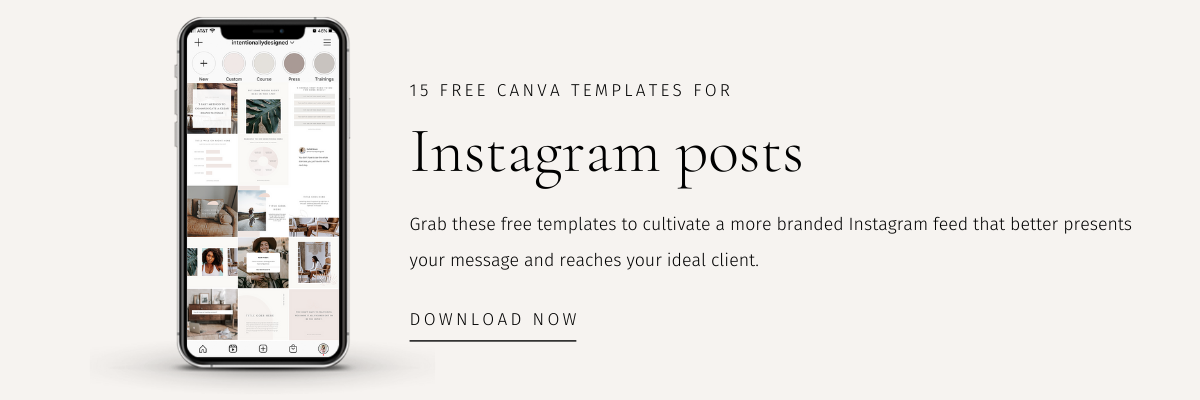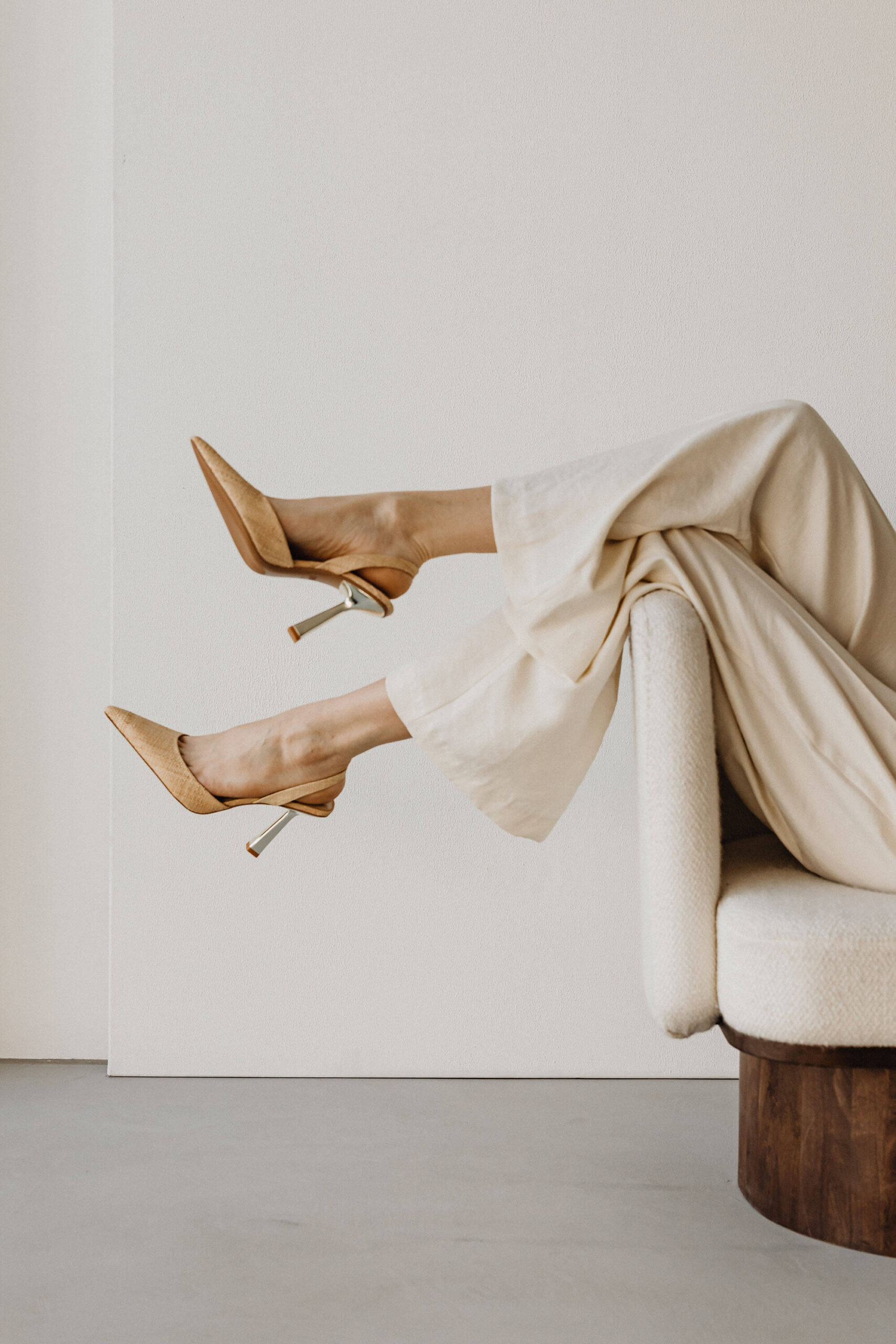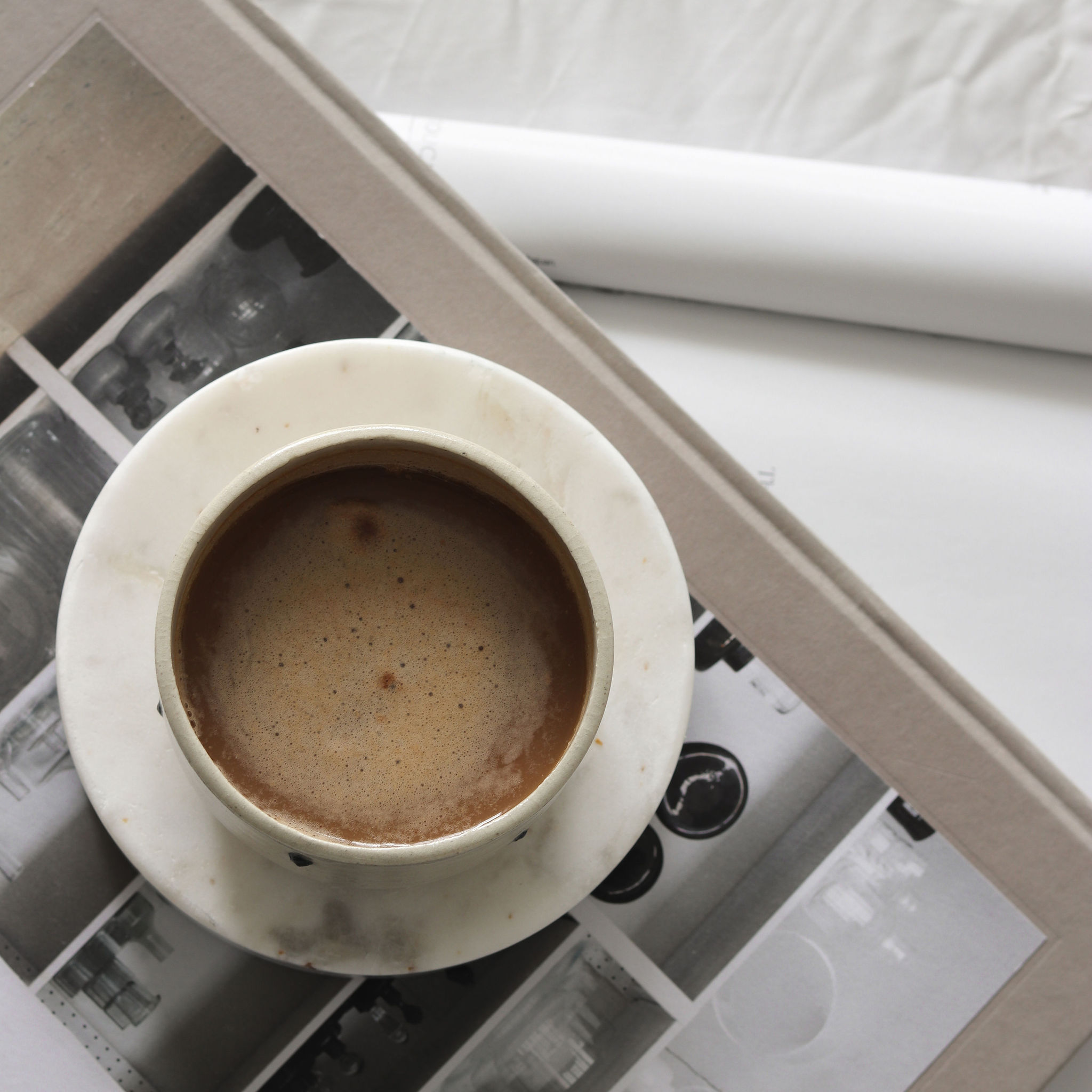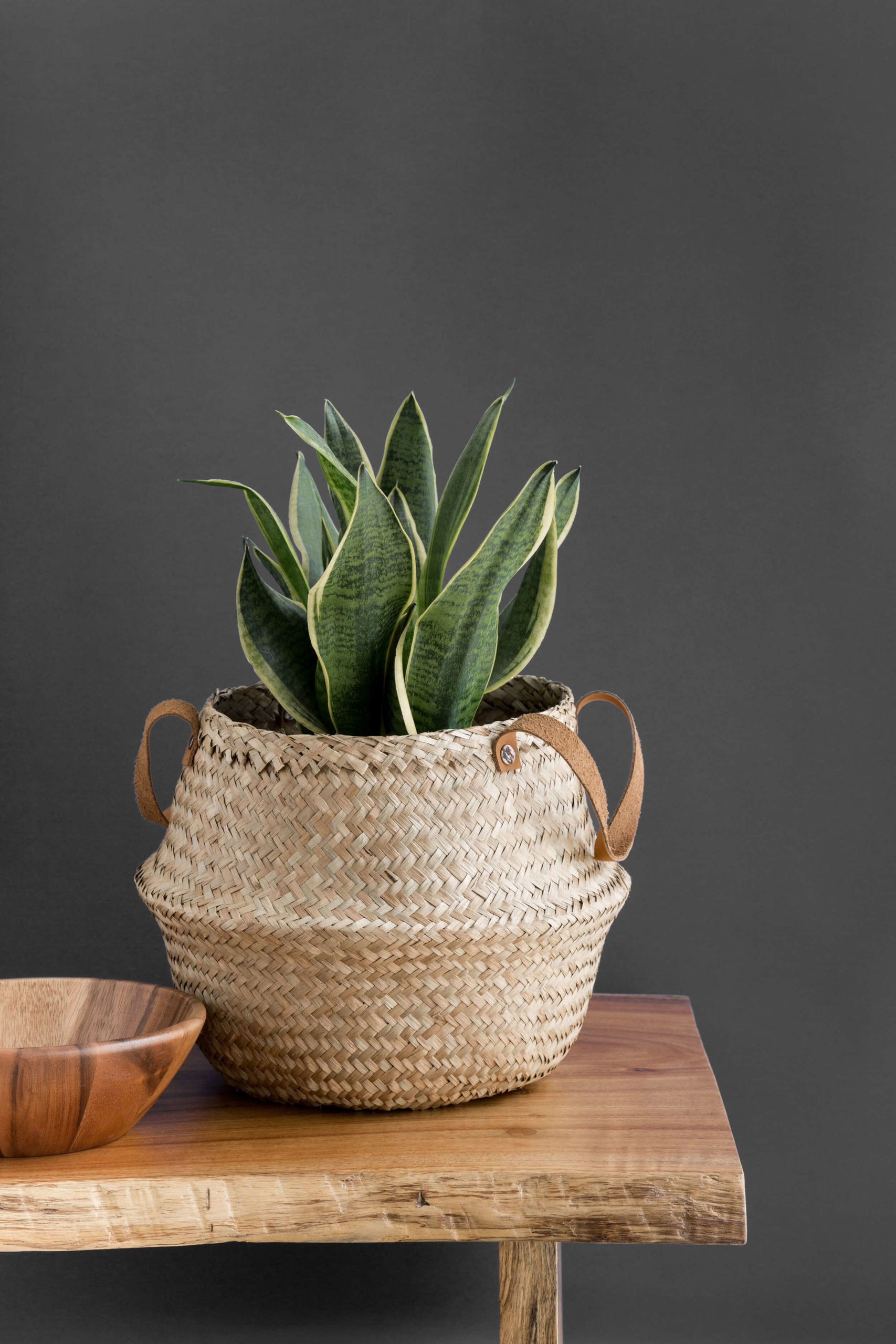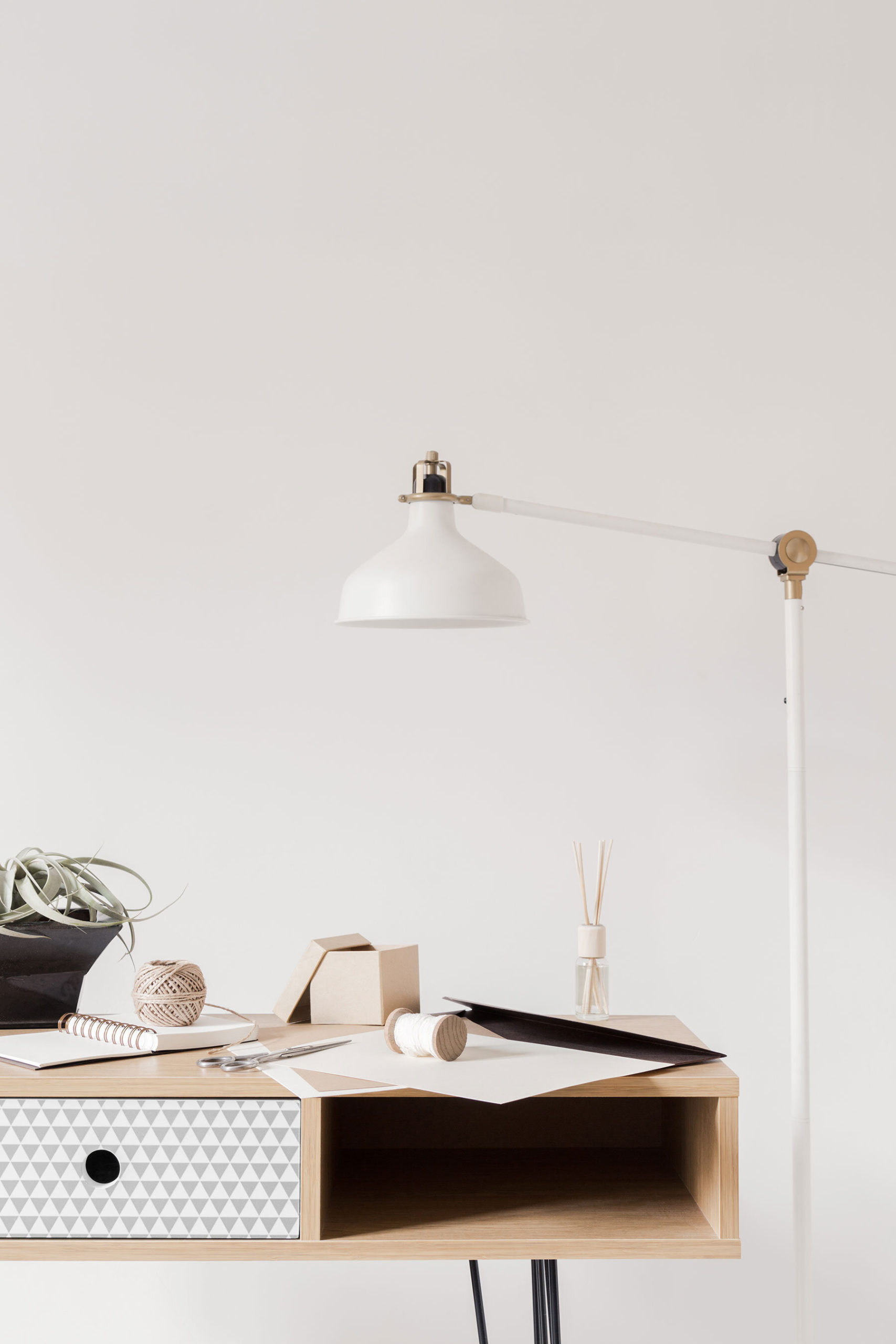There are 2 key things you need to establish when you are starting to build your brand – strategy and style. Before you try to design a logo or create a website, you need to start here. These 2 things will give your brand a solid foundation and a starting part for a powerful and consistent brand, without overwhelming you or making you feel like you need to do it all right from the start.
After you define your brand strategy, you can define your style to establish a consistent look and feel for your brand. Defining your brand style can be intimidating and overwhelming without the right guidance, so if that’s you, you landed in the right place!
This is for you if you:
- Are confused about your brand style and don’t know where to start
- Have an inconsistent brand style that needs refining
- Need guidance and direction on how to find your brand style

Your brand leaves an impression on your audience long after you’ve connected with them. Your brand style and identity are a huge part of how you shape that impression. It’s how you present your brand to them so that they understand what you do and how you can serve them. Simply stated, your brand’s outward appearance gives others an idea of what they can expect from us.
But in this case, I’m not talking about the design of your brand, just the style. Your style is part of your brand identity design, but your identity as a whole also encompasses the design of specific elements like your logos. So when we are talking about defining your brand style, I am just referring to the overarching style of your brand. Is your brand bold and bright? Is it more minimal and soft?
The way that you define that is with these 3 main components: the aesthetic, the colors, and the fonts. Finding the right combination of these things can make a huge difference in the way your brand is presented and perceived.
One thing to consider when trying to determine your brand style is where your personal style and your audience’s style intersect. As an online personal brand, your personal style plays a big part in the style of your brand. But you also have to consider what your people are looking for and what they will be attracted to most visually.
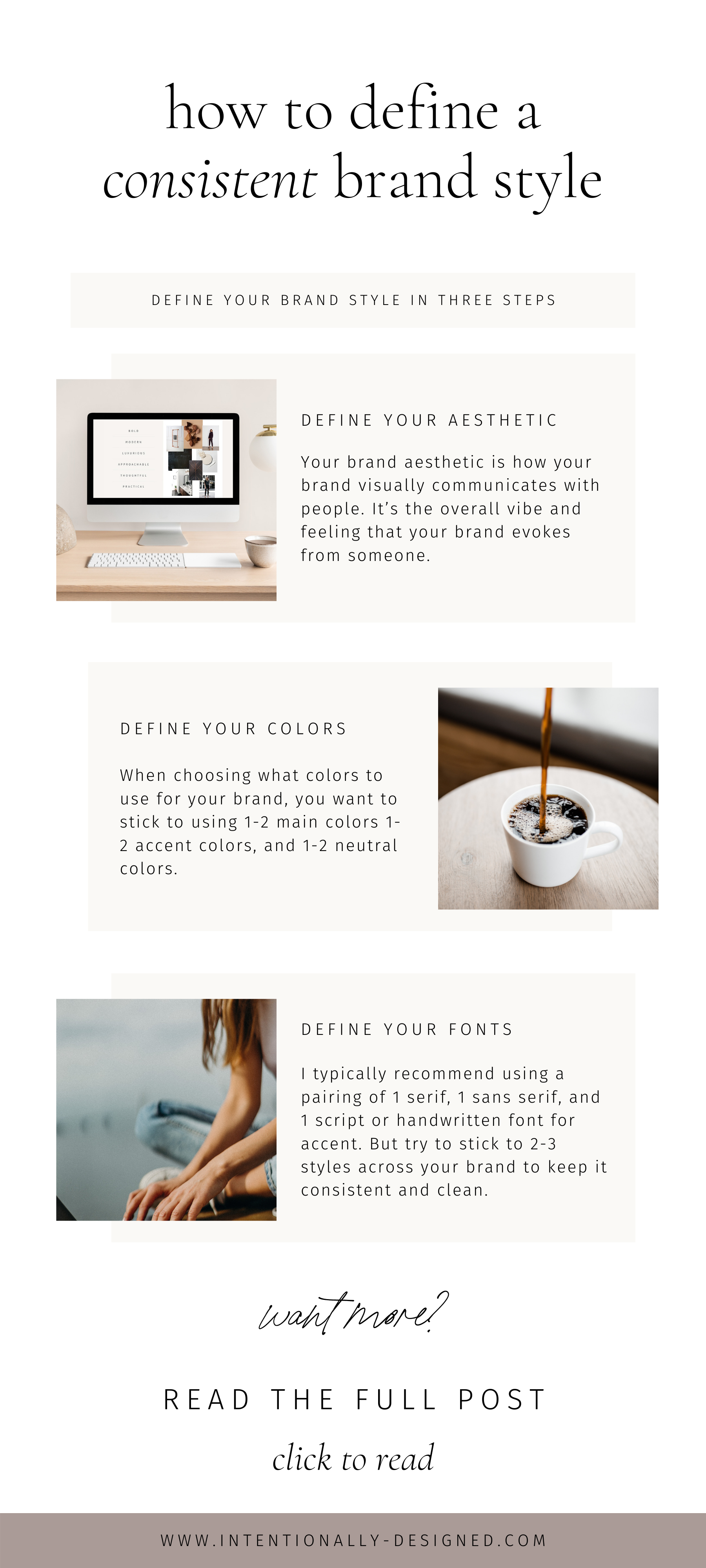
Aesthetic
Your brand aesthetic is how your brand visually communicates with people. It’s the overall vibe and feeling that your brand evokes from someone.
The best way to define the aesthetic of your brand is by putting together mood board for inspiration. This does NOT mean looking at other brands. You can look at other brands to see how what you like and don’t like or observe how colors, fonts, and brand elements are used in context, but you have to be careful not to end up copying those brands. When you’re defining your style, you want it to truly be yours.
After you get the brand peeping out of your system you’ll want to create an actual mood board of things that represent your brand style. Pinterest is a great way to do this, and I even have an entire board dedicated to mood board inspiration as a place to start. You want to collect images that evoke the same feeling you want your brand to evoke. Look for patterns, colors, textures, and things with the same vibe as your brand.
Once you get your board full, go back through and edit so that you have a refined and consistent style. PS: Don’t go overboard here. I know Pinterest is a rabbit hole of amazing images, but you just need a handful of really clear and powerful images to help you define your aesthetic.
In conjunction with your mood board, you can also create a list of brand words that help describe your style. This is done hand in hand with your mood board because you might not know exactly what you want it to be until you see it visually. On the other handwriting down a few words to help steer the direction of your mood board curating can help keep you focused.
In the end, you’ll end up with a clear and consistent aesthetic for your brand that you’ll build on in the next step.
Colors
After you know what the overall vibe of your brand is, you can set your color palette based on that. Color can play a huge part in emotions and buying. There is a reason why people prefer certain colors over others. This preference says volumes about our personalities because each color has an association with a reaction our brain has when we internalize it. Some colors give us a sense of serenity and calm while others make us feel more energetic.
When it comes to choosing the right color and combination of colors for your brand, there is more to consider than you think. You want to think about your style and preference, what your audience is drawn to, and what the color psychology is saying about your brand.
When choosing what colors to use for your brand, you want to stick to using 1-2 main colors 1-2 accent colors, and 1-2 neutral colors. This will give you a well-rounded palette with different options for different uses when executing your brand.
Fonts
The final aspect of your brand style to nail down is your font palette. Just like your colors, you want to establish a set of fonts for your brand to keep things consistent and build brand recognition. And just like colors, fonts can also say a lot about your brand.
A simple, clean, sans-serif font can take on a whole different style than a classic, serif font. A modern, hand-written script is totally different than a delicate, fancy one.
There are no less than a million font choices out there (ok, that’s an exaggeration, but you get the point). With so many choices it is easy to get overwhelmed by what to use for your brand fonts. But it’s important to choose the right fonts and the right pairing to communicate your brand style the right way. The typography you use on your site and in your marketing will make an impact on your audience and you want to make sure they are accurately representing you.
There are a couple of different font traits to look at when choosing fonts. Fonts can be used as bold, light, or italic. They might be serif (with the little feet) or sans-serif (smooth with no feet). They could be script or handwritten. Each characteristic changes the way your brand is conveyed and finding the right combination is key. I typically recommend using a pairing of 1 serif, 1 sans serif, and 1 script or handwritten font for accent. But try to stick to 2-3 styles across your brand to keep it consistent and clean.
Recap
Defining your brand strategy and style early on in your business allows you to have a good foundation for massive brand growth. It also sets the stage for strong brand recognition by keeping your brand consistent and cohesive.
But the real benefit of doing this first is that you don’t have to face the overwhelm of trying to develop your entire brand and website right off the bat. These 2 simple things give you a chance to plant your feet before diving into the details of your brand.
Your visual identity is definitely important for building your brand, but before you can even try to build out the visual side of your brand you need to know your style.
Next Steps
Once you define your brand strategy and style, you can start establishing a consistent brand through social media, email marketing, etc. A great place to start is by using your aesthetic, colors, and fonts consistently on Instagram to start attracting ideal clients and building relationships with your people. Grab these free Instagram post templates for Canva to get started.
Save this Article
Enjoy this article and find it helpful? Pin this image on Pinterest so you’ll always have this info on hand!


